
Saturday, October 4, 2025 @ Town Hall in Seattle
2025 Evening Program
Our presenters come from a variety of green building professions and are invited to share their stories of innovative advancement in all stages and styles of green building. Each presentation is just 10 minutes, and all speakers are coached, to provide a highly entertaining and informative evening. You don’t want to miss this!
5:00 Doors Open/Happy Hour/Networking
6:00 Welcome
6:15 Part I – Presentations Begin
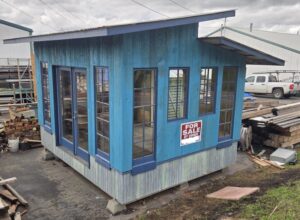
David Bennink
Beyond Reuse: Designing for Disassembly/Reassembly/Rebuilding
We disassemble buildings into parts, and then we sell the parts, but we are being pushed to go beyond just reusing materials. We are now rebuilding with them (currently on structure #240), designing and building small structures that are designed for disassembly, designed to be reassembled at another location, and/or designed to be reconfigured into a new and different structure. We also offer affordable options that may be perfect for emergency housing units or come in the form of kits for the buyer to assemble. These efforts are leading to lessons for the greater building industry. We are not only learning about how to take buildings apart, but how they should be put together as well.
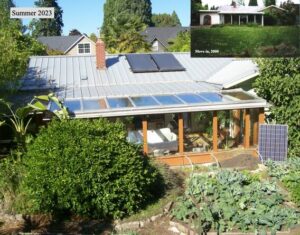
Jan Spencer
25 Years Transforming A Suburban Property
This presentation is a show and tell of 25 years transforming a suburban property in Eugene. The goals from the start were to reduce eco footprints, produce more basic needs on site – food, water, energy, aesthetic. The site is a community educational resource – thousands of people have visited over the years. Changes include grass to vegetable gardens front and back, edible landscaping – fruit & nut trees, brambles, vines, trellises, espalier, roof top; remove driveway and replace with food production and storage, 6500 gal rain water system, garage remodel to living space, south side patio to enclosed passive solar, passive solar ADU. Collaborations with neighbors. The experience is content for new book, “A Primer For Paradigm Shift.”

Chris van Daalen
Boldly Go…Where Code Meets The Future
While I was Guild Director we created www.BuildingInnovations.org and co-founded ShiftZero. This spurred unprecedented advocacy for advanced green building policies and the nation’s strongest energy code. Yet, we still see big gaps between current policy and goals for equity, innovation and net zero carbon, and growing risks of a political backlash (eg. I-2066). I will contrast past accomplishments with a new proposal to transform building codes from prescriptive rules enforced through sanctions to a flexible incentive based approach for builders to reach for the highest green standards (e.g. PHI, LBC). By reducing permit costs and code barriers to healthy affordable housing, it is designed to draw support from across the political spectrum.

Annie Torgersen + Junjie Jiang
Net-Zero Affordable Homeownership Tukwila Townhouses – designed to Build Community – The Southard
The Southard is a Net-Zero Homeownership Development in Tukwila developed by Homestead Community Land Trust and designed by SAGE Architectural Alliance. The Southard incorporates ultra high-performance building envelopes coupled with photovoltaic solar panels and Net Zero energy principles. The development minimizes hardscape and uses bio-retention of storm water. The project is certified Salmon Safe and Water-Wise. Rainwater from roofs is caught for outdoor watering. The development features a central courtyard with grassy lawn, community garden, and toddle play area that together create a strong sense of community spirit while the overall site is higher density with lot sizes smaller than allowed by underlying zoning.
7:15 Intermission
7:45 Part II – Presentations Continue

Ryan Lurie + Roy McGarrah
Joy on Lake Joy: Building the World We Want to Live In
The homeowner wished to retire to her Lakeside cabin in Carnation but wanted to update it to age in place. She also cared deeply about energy efficiency, indoor air quality, resiliency, and responsibly sourced materials. The project has been completed and will be 5 star built green. Some highlights: Low carbon concrete, A Material Carbon Intensity (MCI) of 167 kgCO2/m2, or 34 lb CO2/ft2, FSC lumber for all framing, Entry Trellis from cedar harvested locally from forests that are part of the Jefferson County Sustainable Forestry Plan, Graded and used reclaimed timbers as structural beams and post, Wood fiber board outboard insulation, Hemp batt insulation for subfloor, Final blower door test of .7 ach @ 50 PA.
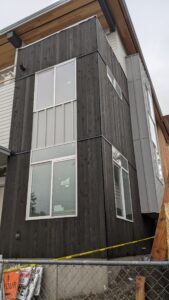
Ryan Temple
Diverse Pathways for Sustainable Wood Sourcing: Three Local Case Studies
The Seattle design and construction community demonstrates commitment to sustainable wood sourcing, but deciphering what that means and finding reliable sources of it can be a challenge. This presentation will use both commercial and residential case studies from Forma Construction, Dovetail Contractors, and 3BLC to highlight the how the definition of sustainable wood can be both inclusive and verifiably legitimate. The presentation will focus on regional impacts as much as it does on the projects themselves. Wood sources covered will include Northwest Tribes, salvage, regional FSC certified forests, and local family forests. Emphasis will be on specific impacts and opportunities for replication.
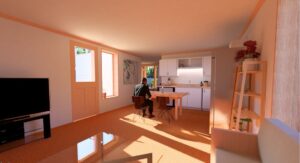
Atticus Floqûet + Konner Franklin
SEADU by Eco-Build at UW
Our project is named SEADU (acronym for Sustainable Economical Adaptable Dwelling Unit) to reflect our club’s values. With Seattle’s housing market values increasing, unequal homeownership is becoming more common through gentrification. We focused specifically on how we can help under-served communities by helping alleviate new construction costs and easing homeownership burdens. The flexibility of our Modular Design aims to accommodate diverse livelihoods and make the construction process of these DADUs more simplified and economically feasible for the average Seattle resident.
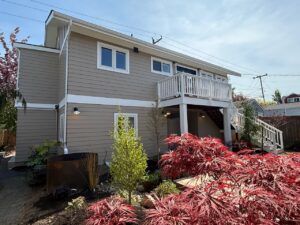
Laura Elfline + Sage K. Saskill
Rooted & Resilient: Multi-generational Living
This West Seattle Carriage House (a DADU with Garage below) began with an adult daughter’s desire to return to the PNW and a mother’s commitment to aging in her beloved place. S.A.G.E DESIGNS NW & Mighty House Construction have a long history of using sustainability to guide them, including: streamlining design costs with an up-cycled SDNW plan set, mature plant preservation, circulating materials into the community, prioritizing energy efficiency, an elevator for convenience and accessibility at all states of life, & estate planning thru condoization to safeguard the mom and daughter’s investments. Above all, this project spotlights how collaborative, sustainable building is about more than just materials and energy, it’s about the people!
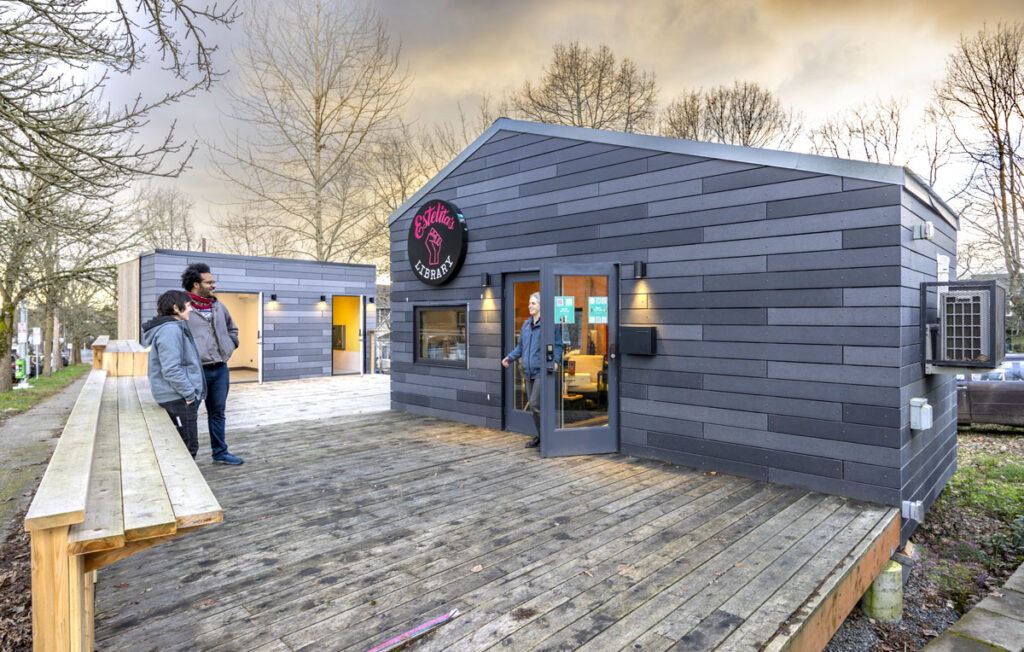
Marcus Henderson + Sarah Smith
Teens Transforming Communities: Estelita’s Library
Estelita’s serves as a sort of salon for locals and activists around the city, in which the voices of people of color are amplified and access is open to all. Estelita’s uses this space for cultural events and community-led discussions, poetry, salsa dancing, photography, and more. Sawhorse serves youth furthest from educational justice, focusing our work in South Seattle. Our programs are free of charge and we pay our students for their participation so it can be accessible to all.